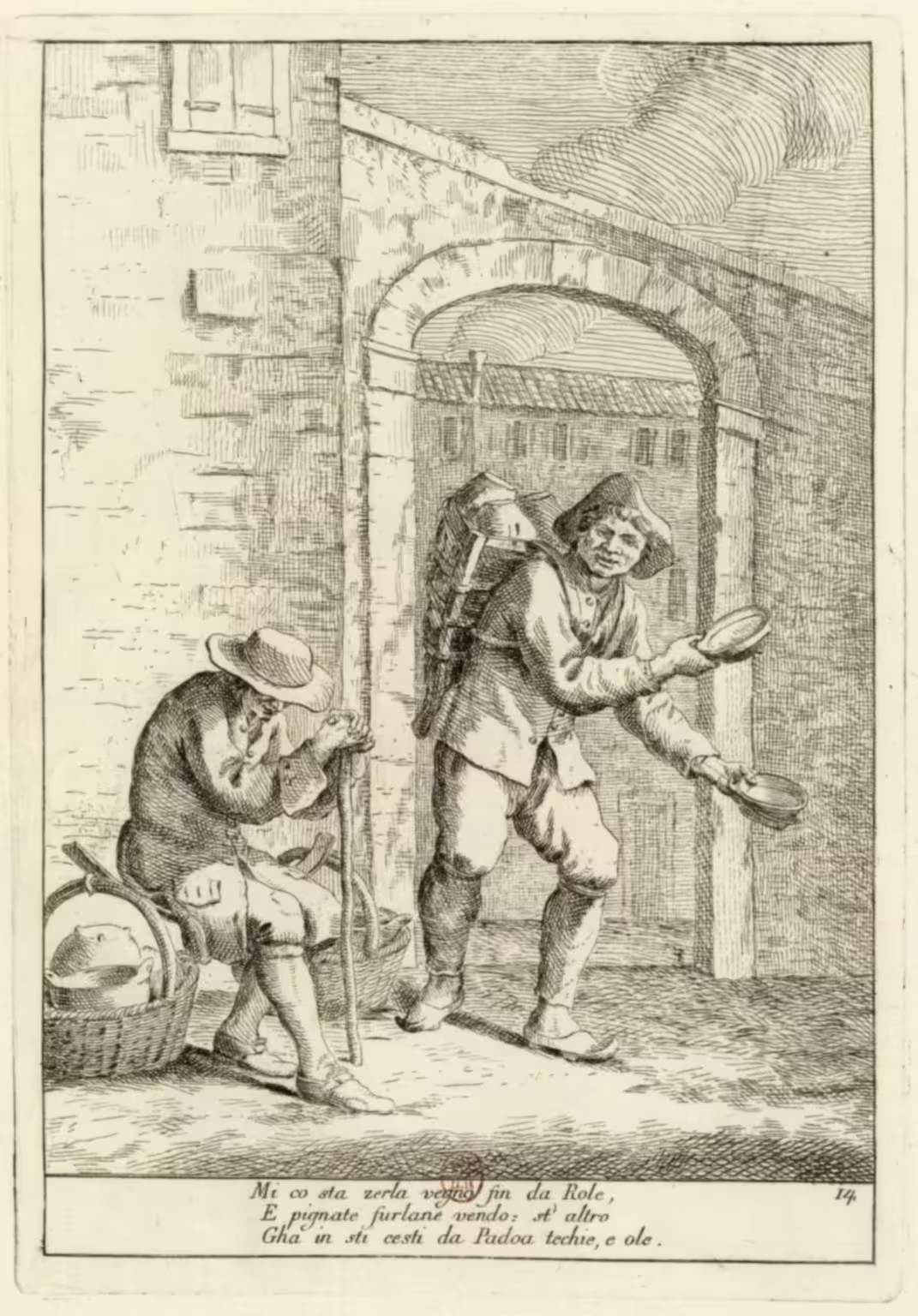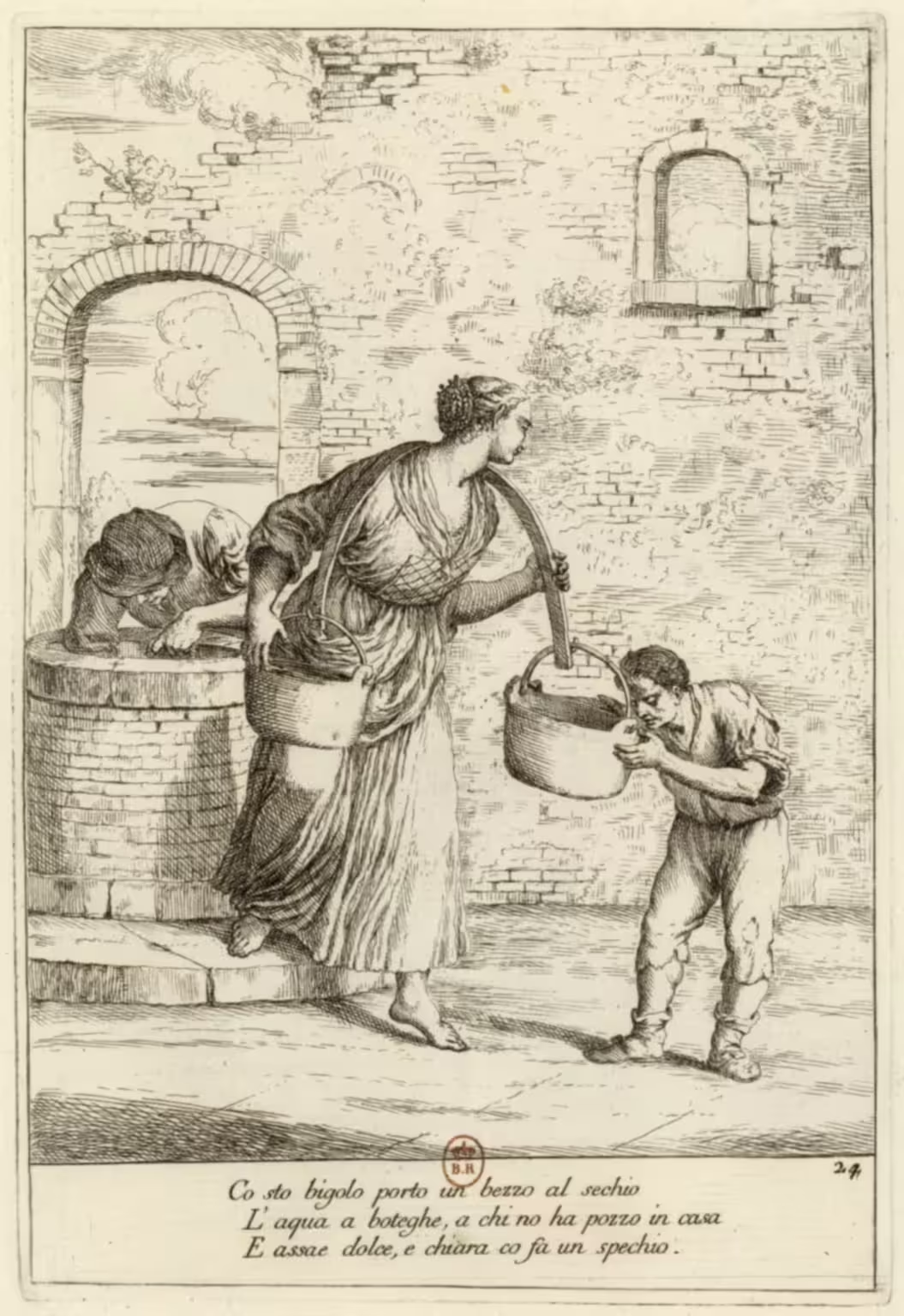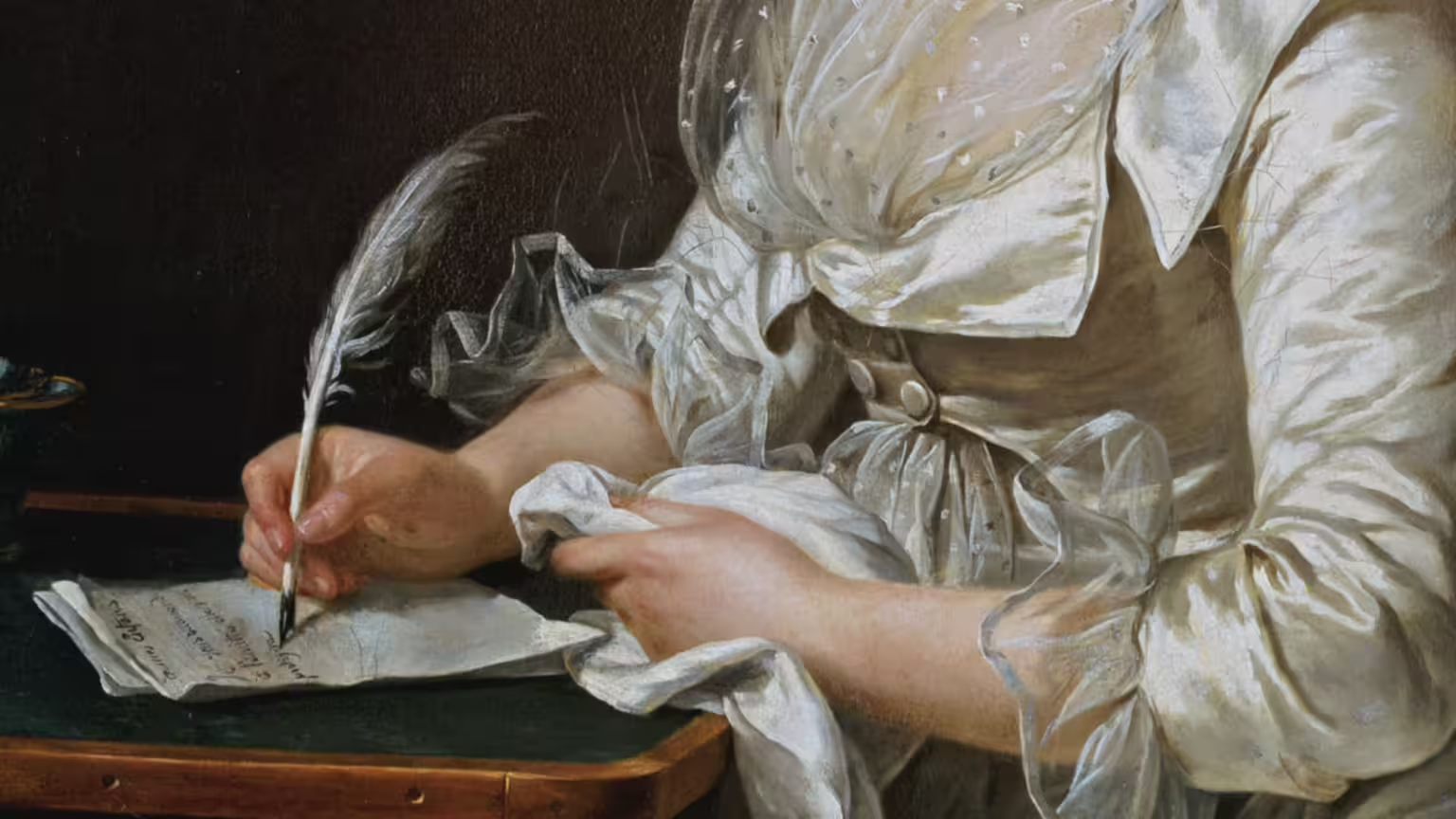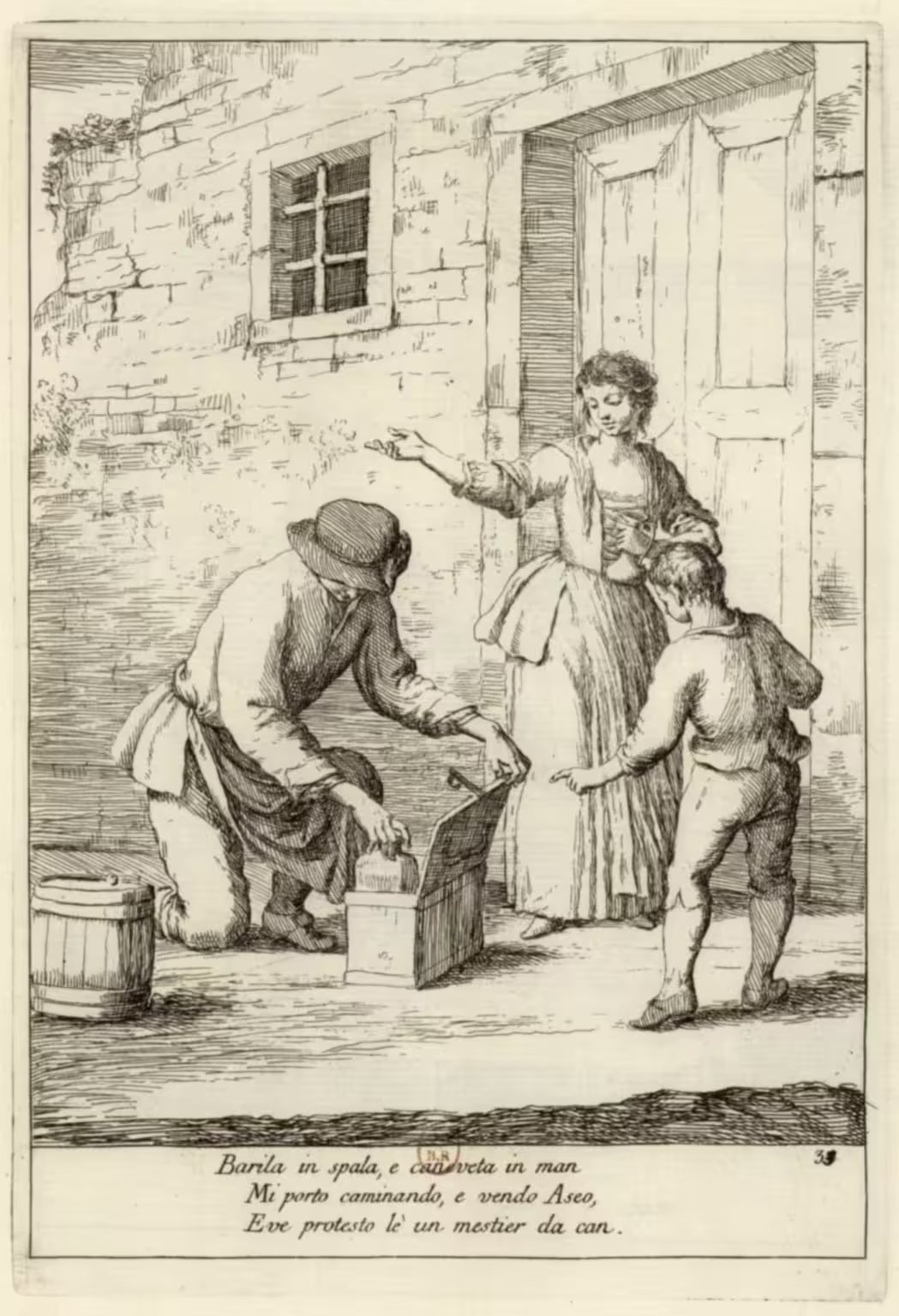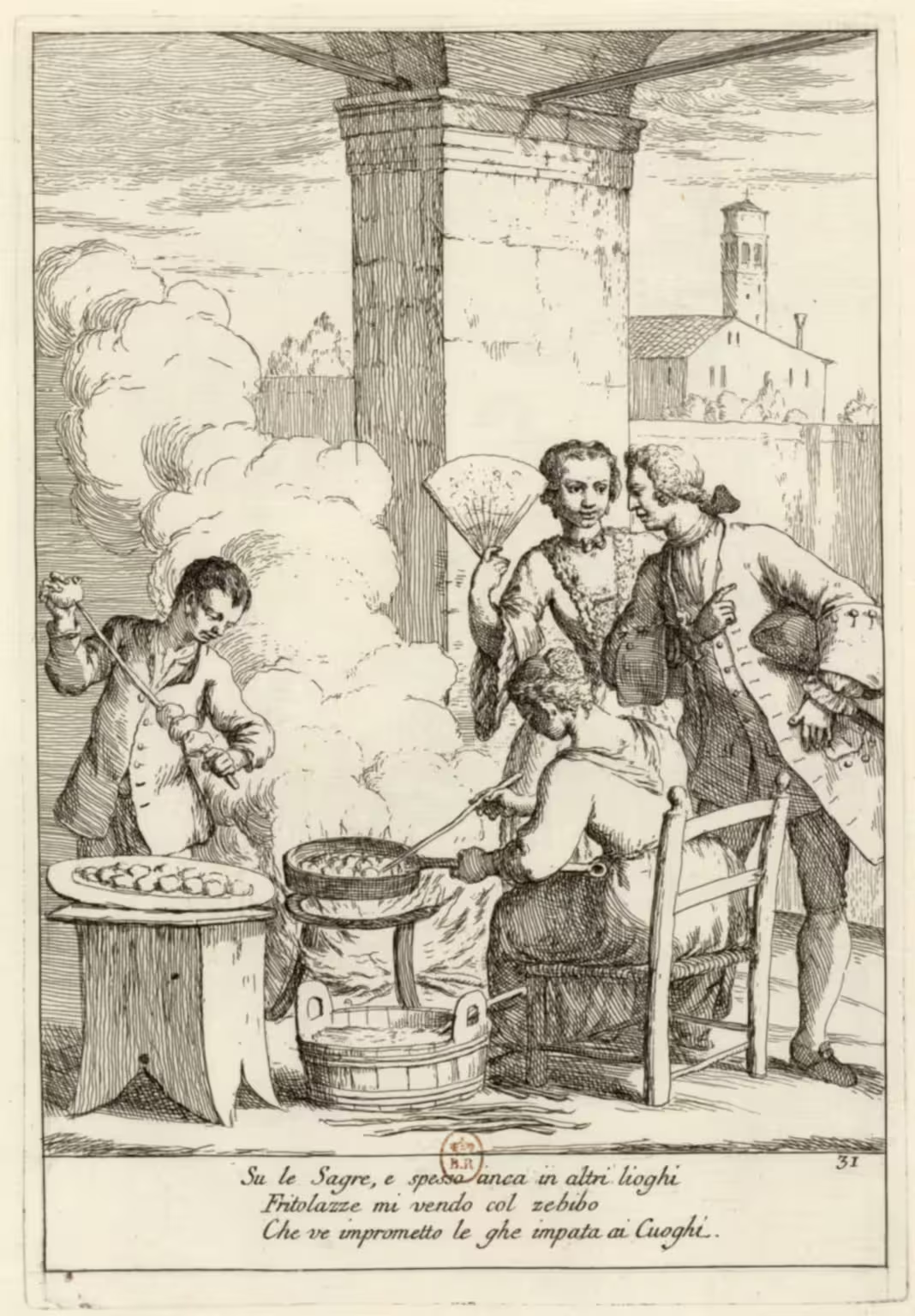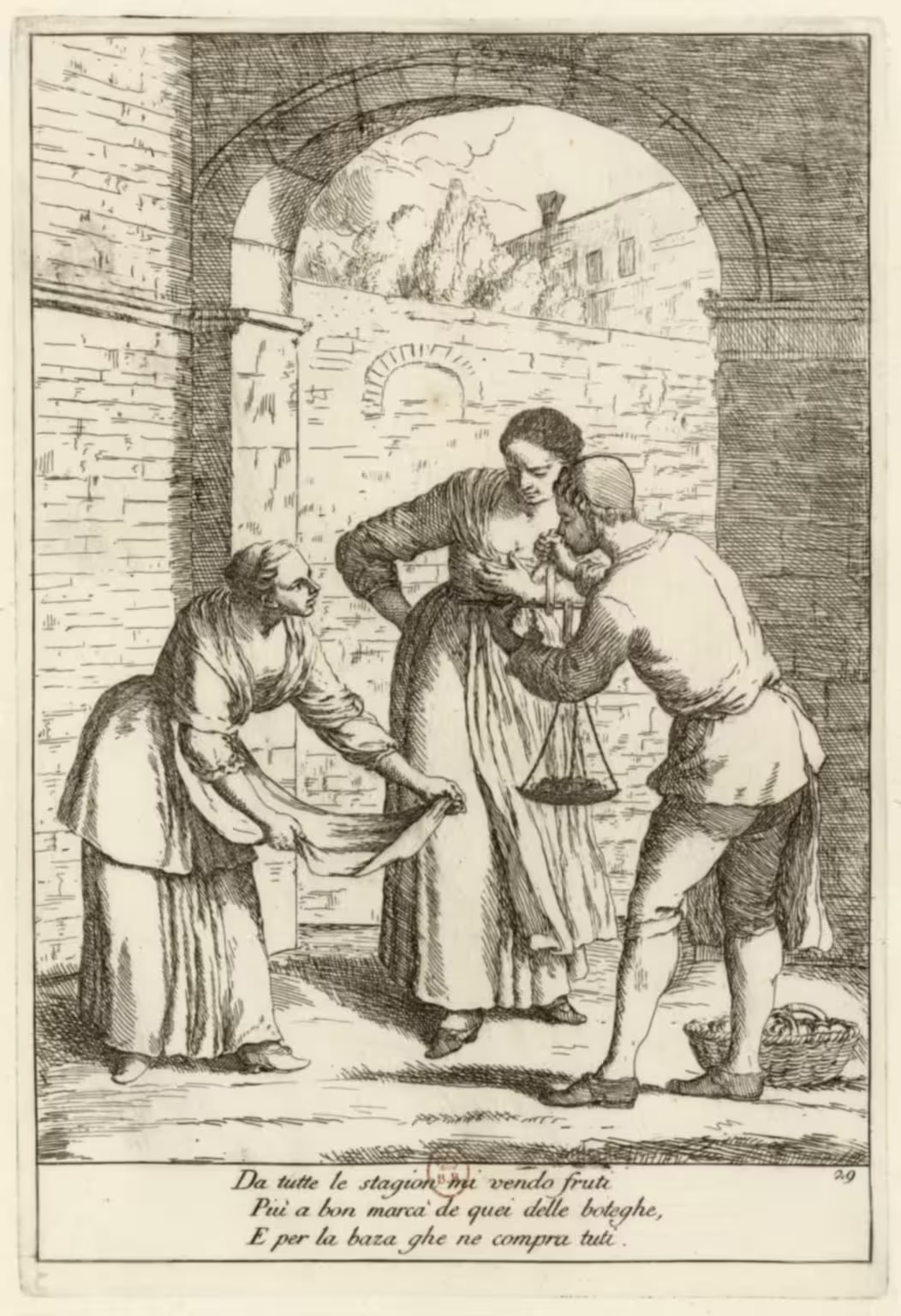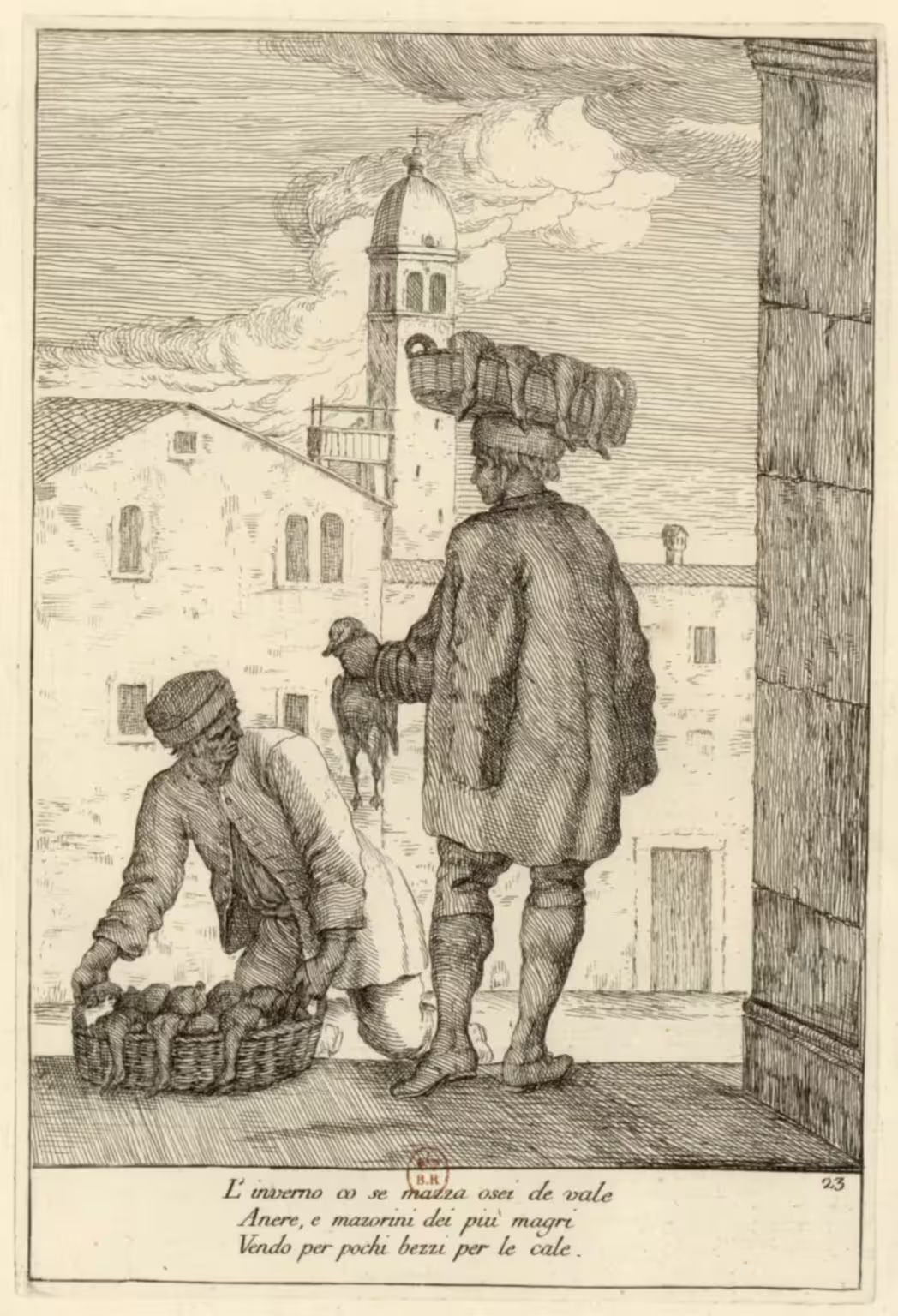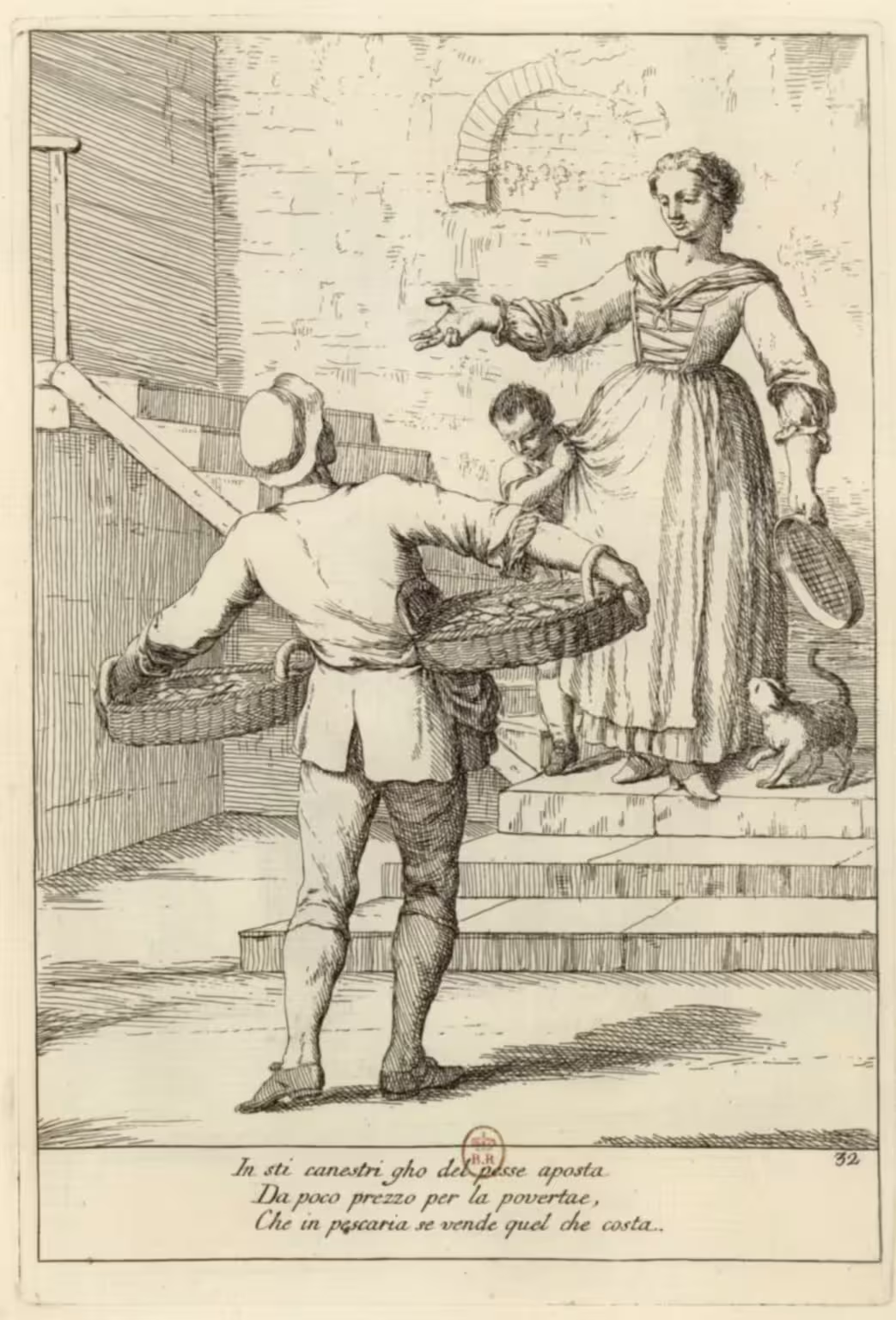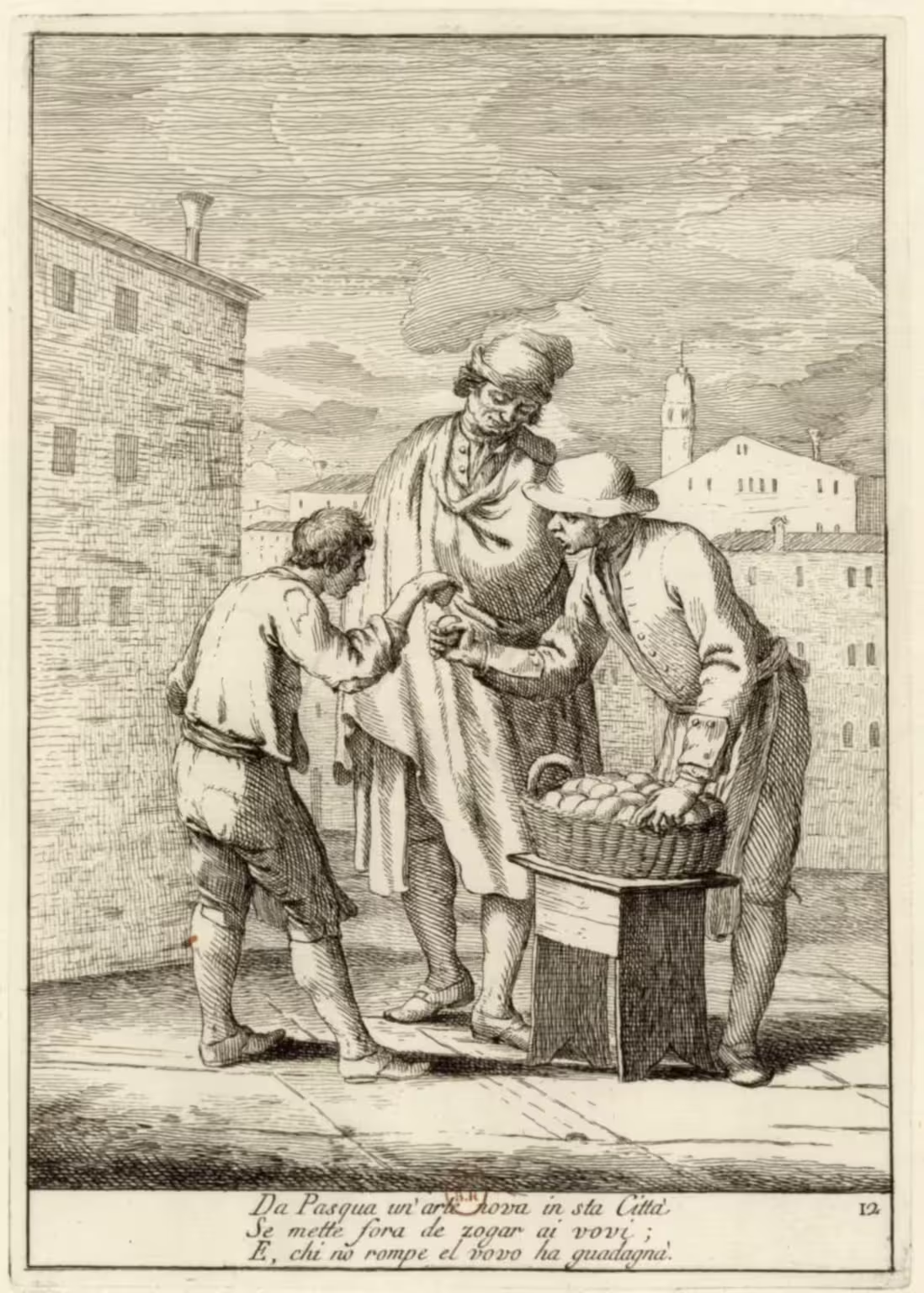The writings on this site are split into several categories, but they’re all listed here together, chronologically, newest first.
The categories are articles, blog posts, lists and translations from various sources.
Almost everything is cross-referenced by names of persons and institutions, by location, and even by bibliography. There is also a glossary of Venetian terms with references.
The podcast and newsletter are on the Venetian Stories website.
-
Pignate — vendor of pots and pans — Zompini — Arti #14
“Pignate” (vendor of pots and pans) from “Arti che vanno per via” (1785) by Getano Zompini, translated by René Seindal.
-
Porta Bigolo con acqua — water bearer — Zompini — Arti #24
“Porta Bigolo con acqua” (water bearer) from “Arti che vanno per via” (1785) by Getano Zompini, translated by René Seindal.
-
Grazie mille!
Having a university history professor on a tour, and getting this kind of response, makes it worth all the time spent studying.
-
Vin in quarta — wine sellers — Zompini — Arti #60
“Vin in quarta” (wine sellers) from “Arti che vanno per via” (1785) by Gaetano Zompini, translated by René Seindal.
-
Aseo — Vinegar seller — Zompini — Arti #33
“Aseo” (Vinegar seller) from “Arti che vanno per via” (1785) by Gaetano Zompini, translated by René Seindal.
-
Frittole — street seller of fritters — Zompini — Arti #31
“Frittole” (street seller of fritters) from “Arti che vanno per via” (1785) by Gaetano Zompini, translated by René Seindal.
-
Fruttariol — fruit seller — Zompini — Arti #29
“Fruttariol” (fruit seller) from “Arti che vanno per via” (1785) by Gaetano Zompini, translated by René Seindal.
-
Foleghe , e Mazzorini — Coots and ducks — Zompini — Arti #23
“Foleghe , e Mazzorini” (Coots and ducks) from “Arti che vanno per via” (1785) by Gaetano Zompini, translated by René Seindal.
-
Pescaor — street vendor of fish — Zompini — Arti #32
“Pescaor” (street vendor of fish) from “Arti che vanno per via” (1785) by Gaetano Zompini, translated by René Seindal.
-
Dai Vovi — seller of eggs — Zompini — Arti #12
“Dai Vovi” (seller of eggs) from “Arti che vanno per via” (1785) by Gaetano Zompini, translated by René Seindal.

